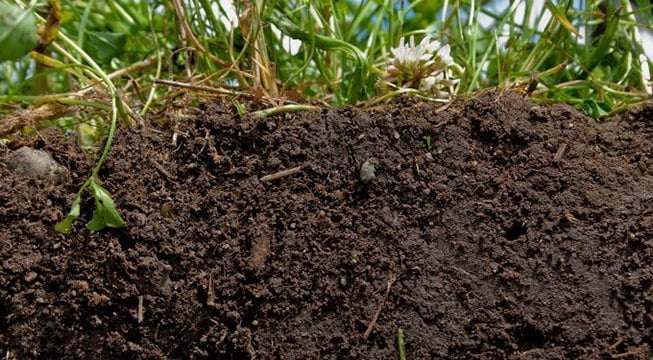
When we think about the environment, our minds often jump to images of forests and oceans—the types of lush ecosystems that are picturesque in their display of the biodiversity and growth capable on this planet. What often escapes our consciousness is the foundation of it all, the land—more specifically, the soil.
Why Soil is Important
Soil is quite literally at the root of everything. It functions as an incredible source of interconnectedness across the globe.
Topsoil is woven into many aspects of our lives, including:
- Health
- The environment
- Security
- Climate
- Water
With the integral role it plays in our personal lives, our local community and our global community, our topsoil—and the way we treat it— serves as a reminder of how our actions impact the rest of the world.
Unfortunately, it’s not being given the attention the planet needs it to receive.
Environmental Impacts of Degraded Soil
Currently, 40 percent of the soil that is used for agriculture is either degraded or seriously degraded. These levels of depletion can have monumental effects on the environment and the human population, such as:
- Soil Productivity. According to U.N.’s Food and Agriculture Organization, if the world continues at its current rate of soil degradation, we have about 60 years of topsoil left. And having adequate topsoil is necessary for food production. Degraded soil will produce 30 percent less food over the next 20-50 years at a time when demand is expected to increase by 50 percent.
- Water. Even moderately degraded soil will hold half the water that healthy soil does. And as the need for fresh water gets closer to reaching a crisis point, the loss of water because of unsustainable irrigation could lead to major conflicts in the future—especially with the consideration of climate change and food security.
- Loss of Carbon and Nutrients. Many farming methods are stripping soil of carbon and nutrients, which is one of the main causes of soil being lost at 10-40 times the natural replenish rate. And with the seriousness of climate change, we need the Earth to be absorbing carbon instead of releasing it.
- Ultimate Desertification. Desertification is the chronic degradation of our dry-land ecosystems by human activities—including farming, mining, overgrazing, clear-cutting—and climate change. One-third of the planet is desertified, with livestock as the leading cause because of both overgrazing and ecosystem destruction in order to expand production. Desertification is linked closely with topsoil depletions and it presents the potential for 50 million people to be displaced over the next 10 years because of unproductive land.
How Does Soil Depletion Happen?
Contrary to a cursory glance, soil is living. It is home to an inconceivable number of microorganisms that depend on carbon. Unfortunately, many farming methods are stripping vegetation from the soil and therefore are stripping microorganisms and carbon.
The root causes of this depletion are the loss of vegetation through burning, removal for animal feed, and over-plowing. Misuse of fertilizers and overgrazing are also culprits.
How to Address Threats to Soil
The bottom-line is that we need to get carbon back into the soil—which means updating farming practices around the globe.
Plowing after each harvest loosens the topsoil and subjects it to being washed or blown away. Methods like this cost the U.S. an estimated $37 billion each year in productivity losses.
One practice that soil experts recommend is no-till farming. This method involves not tilling the land between plantings, leaving crop stubble to reduce erosion and planting new seeds between the stubble rows— all of which helps to promote life within the soil and keep it intact.
Although agricultural practices are by far the leading cause of topsoil loss, there are things that can be done at home. For example, using a rain barrel can capture the water that comes off your roof and keep soil from being carried away. And creating or adding to your garden can also make it more difficult for soil to be displaced.
